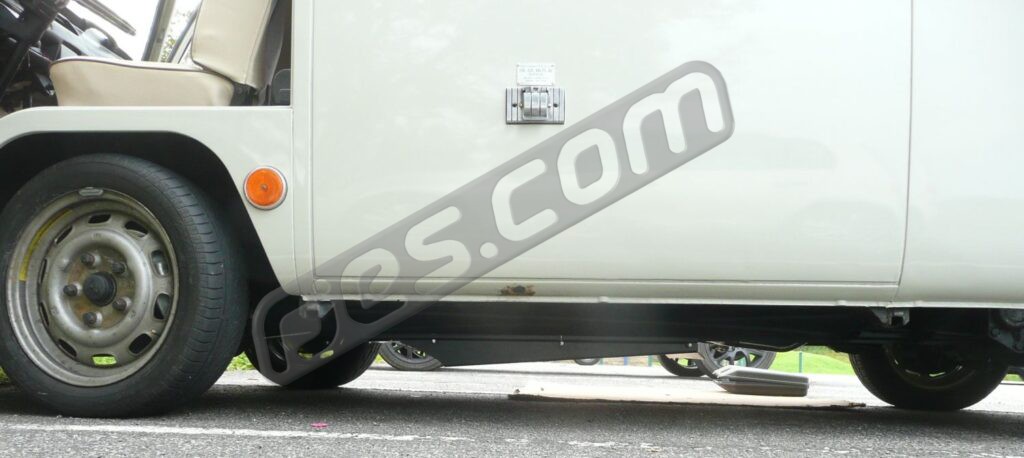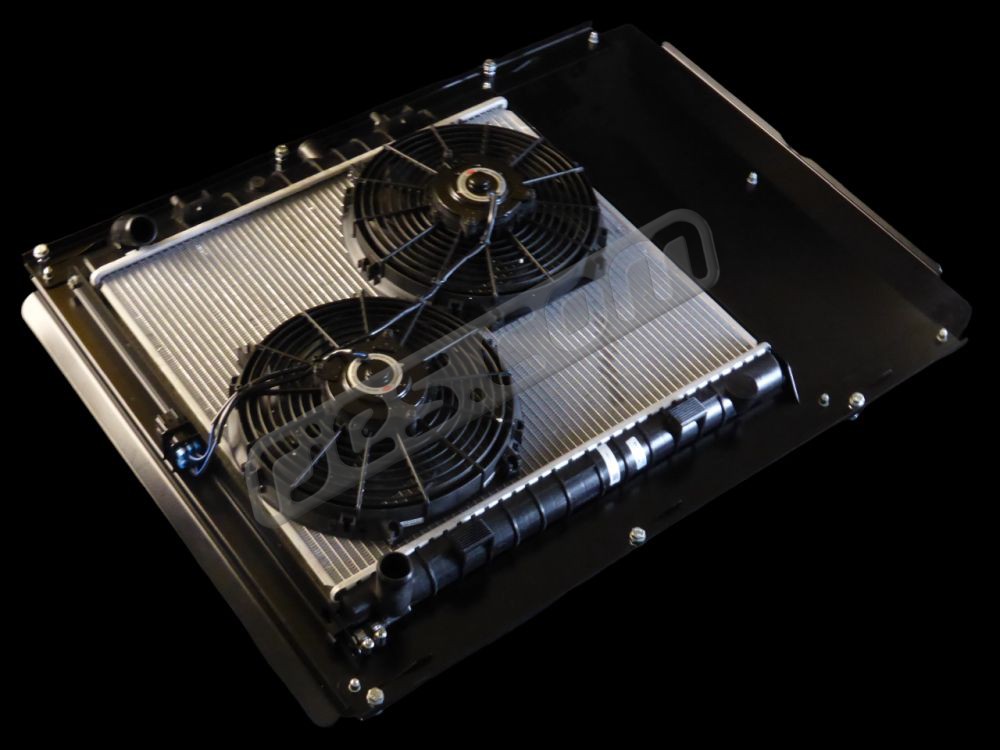
- Very thoroughly tested and proven to cool up to around a 40 oC ambient temperature with up to a normally aspirated EJ25 without relying on the fans any more than a production car would
- IP67 fan connectors, plug directly into our front extension harnesses for ECU fan control as Subaru intended
- zinc plated and powder coated for corrosion protection
- OEM quality parts used throughout (we could easily make the system cheaper by using unbranded components, but that’s not our thing – we’ll leave that to competitors)

Developed from 2007 to 2009 with advice from an OEM cooling system expert (thanks John), the objectives for our bay and split screen bus cooling system were:
- to cool the commonly used Subaru engines without ever relying on electric fans any more than a production car would do
- …….in ambient temperatures higher than most customers will ever need to use their VW in
- to require absolutely minimal modifications to the VW (just removal of the central ‘belly pan’ (if fitted – not all modes have them, and of those which so, some are welded on and some are bolted on), removal of the central air duct, and drilling either 6 or no 8.5mm holes, depending on VW model) – no massive holes hacked through chassis rails as with some other systems (and then ‘reinforced’ by welding a plate all around the hole – some so called ‘specialists’ clearly have absolutely no understanding of vehicle structure)
- to be as visually subtle as possible
We settled for under the floor as the optimal location (see Cooling a Subaru Engine in a VW for more details), and did some fairly extensive testing in a customers EJ25 powered early bay / T2a (thanks Rick). This involved datalogging engine management parameters and 7 different temperature measurements, while driving up some of the steepest hill the Peak District has to offer. The results predicted that the system should cool a normally aspirated EJ25 up to around an ambient temperature of around 40 oC, with was about ideal. Unfortunately the development budget didn’t stretch to actually testing in that kind of ambient temperature, however, various customers have done since, and proven that the test prediction was correct – they do cool to around 40 oC before relying on the fans being on more frequently tan they would in a typical production car. Thanks Willow for the feedback on use in South America.
We never had any intention of testing with more horsepower, however, we have had customers use some of the excess ambient temperature ability of our cooling system in the not so hot UK to cool considerably more powerful engines. One with a turbo engine of around 240 bhp also reported it never relying on the fans more then a production car would do. Although it would be interesting to repeat our testing on an installation like that to get a prediction of the amount of excess cooling ability it has, the test is quite involved, and would not be worth the effort for the incredibly small number of customers who put engines with more then 160ish bhp in bay and split window buses.
See for the recommended coolant schematic
See Coolant Filling and Bleeding Procedure for details of how to fill this system with coolant
Sorry, these radiator systems are collection only – they’ve very heavy, and we’ve had then get damaged in transit too many times, even after having bespoke packaging made for them
